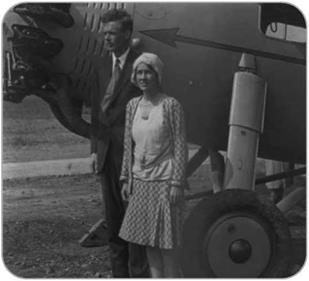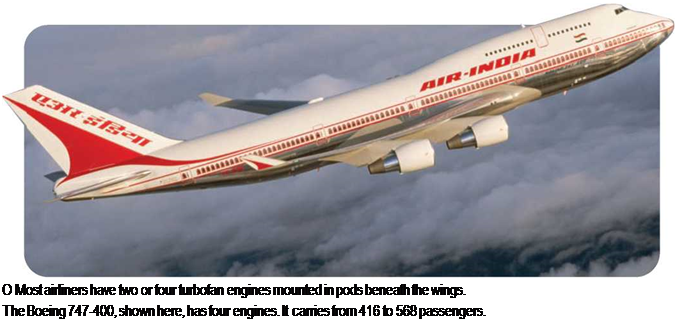Later Years
Over the next weeks and months, Lindbergh was celebrated in cities across Europe and the Americas. Proclaimed “Lucky Lindy,” he became a world hero. In 1929, he married Anne Morrow. Lindbergh taught her to be a pilot, and she wrote moving books about the experience of flying. Some of that work was based on experiences that the two Lindberghs had flying together to test routes for two airline companies.
Then tragedy struck the family. In May 1932, the couple’s two-year-old son Charles, Jr., was kidnapped from their home. Eventually, the child was found dead. Grief and stress continued for the family through the search for and trial of the kidnapper. Soon after the child’s murderer was executed in 1936,
"WRONG WAY" CORRIGAN
One of the mechanics who worked for Ryan Aircraft—the company that built Lindbergh’s plane—gained fame for his own flying feat. During the 1930s, Douglas Corrigan fitted out a plane to cross the Atlantic Ocean. He hoped to land in Ireland, home to his family’s ancestors. Several times, the U. S. government turned down his request for permission to fly, saying that his plane was not safe enough. On July 17, 1938, Corrigan left a New York airfield in a fog.
He was supposed to head west, to California, but he flew east instead. More than 28 hours later, Corrigan landed in Ireland. When questioned, he insisted that the fog made it difficult to read his compass correctly. The feat earned him fame and the nickname “Wrong Way.” Many historians suspect that Corrigan flew east on purpose, but he never admitted to doing so.
____________
the Lindberghs moved to England to live. The couple had five more children.
During the 1930s, Lindbergh traveled widely to promote aviation. After World War II broke out in 1939, he made many speeches urging the United States to stay out of the war. This activity resulted in a great deal of criticism, and Lindbergh resigned his commission in the U. S. Army Air Corps Reserve. Once the United States did enter World War II in
|
О Charles Lindbergh’s wife Anne was the daughter of U. S. Senator Dwight Morrow and poet Elizabeth Cutter Morrow. Anne Morrow Lindbergh became an accomplished pilot herself, and the first licensed woman glider pilot in the United States. |
1941, however, Lindbergh helped the war effort. He consulted with airplane manufacturers, worked as a test pilot, and flew dozens of combat missions.
After the war, Lindbergh continued to promote the growth of aviation by working with the U. S. military and with private airlines. He also helped to obtain funds for scientist Robert Goddard to do his vital work on rocket development. Lindbergh died in Hawaii in 1974, at the age of seventy-two.
N
SEE ALSO:
• Barnstorming • Pilot • Rocket
• World War II
_________________ У














 _____________________________________________ J
_____________________________________________ J
 Satellites vary in size from a few pounds to many tons. Some remain in orbit for only a few weeks, while others have an expected lifetime of hundreds of years. They are packed with scientific instruments, usually miniaturized to save weight and space. Manufacturing is closely monitored and takes place in germ-free conditions. All systems are thoroughly tested-once launched, satellites must continue to work under remote control for long periods of time.
Satellites vary in size from a few pounds to many tons. Some remain in orbit for only a few weeks, while others have an expected lifetime of hundreds of years. They are packed with scientific instruments, usually miniaturized to save weight and space. Manufacturing is closely monitored and takes place in germ-free conditions. All systems are thoroughly tested-once launched, satellites must continue to work under remote control for long periods of time.




